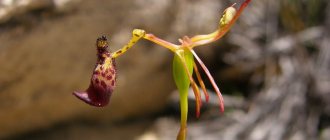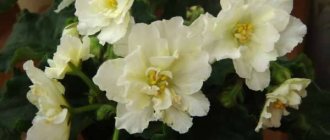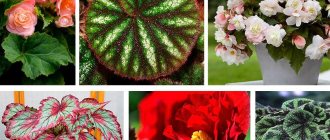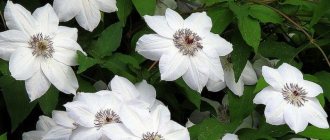plant species of the family Lamiaceae
| Clerodendrum quadriloculare | |
| Scientific classification | |
| Kingdom: | Plantae |
| Clade : | Tracheophytes |
| Clade : | Angiosperms |
| Clade : | Eudicots |
| Clade : | Asterids |
| Order: | Lamiales |
| Family: | Lamiaceae |
| Genus: | Clerodendrum |
| Variety: | C. quadriloculare |
| Binomial name | |
| Clerodendrum quadriloculare (Blanco) Merr. | |
| Synonyms [1] | |
| |
Clerodendrum quadriloculare
(known as
bronze
- clerodendrum ,
firecracker
, [2][3]
Philippine tower of fame
,
shooting star
or
starburst bush
[3] in English, and bagawak or bagawak morado [2][3] in Filipino). a species of flowering plant native to New Guinea and the Philippines. It is one of many species formerly included in the family Verbenaceae, but transferred to Lamiaceae based on molecular studies.[4] [5] [6] [7] The plants produce flowers that look good in the garden, but can be difficult to eradicate.
Description[edit]
Bronze-leaved clerodendrum is a medium to large sized shrub, growing to a height of about 5 m (16 ft). Branches and twigs are tetrahedral. The leaves are arranged in opposite pairs and on petioles of medium length. The leaf blades are oblong and up to 20 cm (8 in) long, with green upper surfaces and purple lower surfaces; they have a rounded base, wavy edges and pointed tips. Showy clusters of flowers grow at the ends of the shoots. Each contains many flowers with thin pink tubes about 7 cm (3 in) long, each ending in five thin white, upturned corolla lobes about 1.5 cm (0.6 in) long. The flowers are followed by ellipsoidal capsules containing four seeds. [8]The corolla tubes are exceptionally long and require special pollinators. [9]
Invasiveness[edit]
Bronze-leaved clerodendrum is grown as an ornamental shrub, but it has become established in many places, some of which are considered an invasive species. [8] It is a vigorous, fast-growing shrub that produces suckers that can develop into thickets. In addition, cuttings and parts of detached roots move easily with the soil and can develop into new plants, and seeds, which germinate easily, are carried by animals and birds in their droppings. [8] This shrub can grow in full sun, partial shade, and deep shade, and in some locations grows as a dense monospecific ground cover under the forest canopy. [9]
LiveInternetLiveInternet
Clerodendrum
trichotomum Clerodendrum trichotomum
-
trichotomum
This is one of the few plants that has received the Royal Garden Society Award for a plant of exceptional beauty and usefulness. Few plants have flowering descriptions such as “sensational”, “fantastic”, “mind-blowing”.
Over time, the plant takes on the shape of a tree and can grow up to 2 m and higher. After flowering, you can prune to stimulate branching. The bush grows moderately. Easy to care for. Clerodendrum trichotomum is intended for cultivation both in open ground in the garden and indoors, as an extension (tub) crop. Tolerates temperatures as low as -22 C. In cooler regions it is necessary to insulate and mulch. When the above-ground part freezes, the plant quickly recovers in the spring with young shoots from the roots. Some gardeners in gardens with cold winters cut it out, leaving roots in the ground that grow back in the spring or grow them in tubs overwintering in a cool room.
Flowering begins with creamy white flowers, very fragrant, grouped in complex umbels, and ends with dark blue berries in bright pink cups. Young leaves are lilac, collected in clusters in August. After the corolla falls off, a red calyx remains, in the middle of which a turquoise-blue drupe forms. For better flowering and berry formation, it is good to plant in almost “full sun” in “rich”, well-drained loamy soil. The flowers have a delightful scent reminiscent of jasmine. Spectacular view of a fruit-bearing bush at the end of the season!
Clerodendrum trichotomum was introduced into European cultivation around 1800. This plant was described as early as 1916 in the early Danish Book of Trees and Shrubs, and was sold by Danish nursery owner Aksel Olsen as early as 1928. Clerodendrum trichotomum - trichotomum , in English-speaking countries, Harlequin Glory Bower is a tree of Harlequin glory, a walnut or butter tree, Chance tree is a tree of a happy occasion, trees of fortune (fortunate), this variety is also referred to in English-language literature as three-lobed - “leaves of a young man”. This stunningly beautiful plant is native to China, Korea, Taiwan, Japan and India. Clerodendrum trichotomum is a large, variegated, beautiful bush.
Clerodendrum
bungei
(
Clerodendrum bungei
)
Clerodendrum bungei from the Verbenaceae family.
Clerodendrum bungei received the name “Bouquet of Kashmir” for its very beautiful fragrant pink flowers, collected in a lush bouquet, which open in summer at the ends of young shoots. The homeland of this species is China, so it tolerates cold quite well, but it should be planted in open ground only in areas with a mild climate. In this case, even if the above-ground part of the shoots freezes, they will again be able to sprout from the rhizome.
The plant genus Bungea, as well as a large number of plant species, are named after the botanist, florist, and traveler Alexander Andreevich Bunge. He was one of the founders of the geographical-morphological method in plant taxonomy.
Alexander Andreevich Bunge - (Alexander von Bunge)
German-Russian botanist, full member of the Imperial St. Petersburg Academy of Sciences, professor at the University of Dorpat. In 1821 he entered the University of Dorpat to study medicine and natural sciences. In 1825, having received his doctorate, he went with his teacher Ledebur to Siberia. Appointed during the trip as a doctor at the Kolyvan-Voskresensk mining plants, he undertook excursions first from Barnaul, then from Zmeinogorsk to study Altai. In 1829, he met here with Humboldt, on whose recommendation he was seconded by the Academy of Sciences to a spiritual mission, sent in 1830 to Beijing. He described the material he collected during his trip to China in “Enumeratio plantarum quas in China boreali collegit” (St. Petersburg, 1831) and in “Plantarum Mongolico-Chinensium decas I” (Kazan, 1835). In 1832, Bunge traveled around Altai for the second time (a list of plants collected then was published in 1836), in 1833 he returned to St. Petersburg, and in 1834 he was invited to the Department of Botany in Kazan. In 1835, he traveled around the Volga steppes and Astrakhan province. In 1836 he took the chair of botany in Dorpat. In 1857 he joined an expedition to explore Persia. Through Tiflis, Baku, the Caspian Sea, Astrabad, Nishapur and Mashhad, he went to Herat, from where in 1858 he undertook excursions to explore various areas of Persia; in 1859 he returned through Tehran and Tiflis to Dorpat. In 1867 he retired and devoted himself almost entirely to processing the material collected in Persia. In 1874 he took part in the botanical congress in Florence. The son of Alexander Andreevich, Alexander Alexandrovich, is a zoologist and traveler. In honor of his son, a famous zoologist and traveler, a river, an island, a mountain, Bunge Land, a lake, a plateau and a river on Spitsbergen, a glacier on Novaya Zemlya, a peninsula on the Nordenskiöld archipelago are named. Bunge died in Kiltsi, now Lääne-Viru County, Estonia, on July 18, 1890. Plants described by Alexander Bunge: Genera: Adenonema Bunge; Agathophora Bunge; Alexandra Bunge; Allochrusa Bunge; Anemarrhena Bunge; Barysoma Bunge; Bienertia Bunge; Belovia Bunge; Borszczowia Bunge; Bothriospermum Bunge; Buhsia Bunge; Calysphyrum Bunge; Campylotropis Bunge; Caryopteris Bunge;Ceratostigma Bunge; Chamaerhodos Bunge; Chartoloma Bunge; Chionice Bunge ex Ledeb; Chondrophylla (Bunge) A. Nelson; Cithareloma Bunge; Clastopus Bunge ex Boiss; Dorcoceras Bunge; Eremodaucus Bunge; Eremostachys Bunge; Erithalia Bunge ex Steud; Eversmannia Bunge; Fredolia (Coss. & Durieu ex Bunge) Ulbr.; Gamanthus Bunge; Gastrocotyle Bunge; Girgensohnia Bunge Girgensohnia Bunge ex Fenzl; Goebelia Bunge ex Boiss; Halarhon Bunge; Halicacabus (Bunge) Nevski; Halotis Bunge; Haloxylon Bunge; Harpachaena Bunge; Hegemone Bunge ex Ledeb; Heliocarya Bunge; Hemistepta Bunge; Heterochroa Bunge; Heterozygis Bunge; Homalodiscus Bunge ex Boiss; Hyalolaena Bunge; Hypogomphia Bunge; Keyserlingia Bunge ex Boiss; Kirilowia Bunge; Lachnoloma Bunge; Lachnophyllum Bunge;Lagochilus Bunge; Lagopsis (Bunge ex Benth.) Bunge; Mausolea Bunge ex Podlech; Mausolea Bunge ex Poljakov; Micropeplis Bunge;Miltianthus Bunge; Minthostachys Bunge; Monoploca Bunge; Myripnois Bunge; Octoceras Bunge; Ophiocarpus (Bunge) Ikonn; Opsieston Bunge; Oreophysa (Bunge ex Boiss.) Bornm; Oresitrophe Bunge; Orychophragmus Bunge; Oxyglottis (Bunge) Nevski; Oxygraphis Bunge; Oxynepeta Bunge; Pachyneurum Bunge;Pachypterygium Bunge;Pentapeltis Bunge; Pentapeltis (Endl.) Bunge;Petrosimonia (Petrosimonia) Bunge; Phtheirospermum Bunge; Phtheirospermum Bunge ex Fisch. & CAMey; Piptoptera Bunge; Platysace Bunge; Polytaxis Bunge; Pycnostelma Bunge ex Decne; Sarcozygium Bunge; Schoenolaena Bunge; Scorodosma Bunge; Seidlitzia Bunge ex Boiss; Smirnovia Bunge; Steptorhamphus Bunge; Streptoloma Bunge; Sympegma Bunge; Tetracme Bunge; Thladiantha Bunge; Ungernia Bunge; Urostelma Bunge; Uvarowia Bunge; Xanthoceras Bunge. Subgenera: Gentian (Gentiana) subgen. Chondrophylla (Bunge) Halda; Oxytropis subgen. Orobia (Bunge) CWChang; Buttercup (Ranunculus) subgen. Oxygraphis (Bunge) LDBenson.
Japanese medlar or Loquat
,
or
Japanese
Eriobotrya
japonica .
There are two different types of plants called medlar - the Germanic and the Japanese or loquat. Both species, although they belong to the same family, are representatives of different genera. German medlar - belongs to the genus Medlar, from the Rosaceae family. The German medlar turns out to be the only representative of its genus, Mespilus. Loquat japonica, or loquat, or Eriobothria japonica, is a small evergreen tree or shrub of the apple subfamily of the rose family. Lokva is also known as Chinese (Japanese) and Maltese plum. Here are its various names: nespolagiapponese (Italian), bibassier (French), wollmispel (German), nispero (Spanish), ameixaamarelle (Portuguese), maltaeriği (Maltese plums in Turkey). The Russian name medlar is a borrowing from the Turkish language, which, in turn, came from Greek.
Eriobotrya
japonica
(
Thunb
.)
Lindl
.
Family Rose or Rosaceae
.
_
_ Eriobotrya japonica
,
or Loquat
,
or Loqua
This genus (Eriobotrya) includes about thirty species, distributed mainly in Southeast Asia. The name of the genus is formed from two Greek words meaning “wool” (erion) and “brush” or “cluster” (botris), which indicates the strong pubescence of the inflorescence. It is this medlar (Japanese, not German!) that is very close to hawthorn, quince and pear. Until 1882, this medlar was known from the description of the biologist Thunberg as Mespilus japonica Thunb. in the monograph “Flora japonica” (1784). In the 19th century, another scientist named Lindley revised the medlar and separated the loquat into a completely independent genus - Eriobotrya Lindl. There is an opinion that Europe first learned about loquat even earlier, in the 17th century - and not from the French or English, but from the work of the Jesuit missionary Michael Boim “Flora sinensis”, as well as through the botanist Kaempfer, who visited Japan in 1690. In 1784, the Loquat japonica tree was planted in the National Garden in Paris, and in 1787 in the Royal Botanical Garden in England. Soon it also appeared on the Riviera and Malta, Algeria and the Middle East, and the fruit began to be sold briskly in local markets. Already by 1818, magnificent juicy fruits were grown in greenhouses in England. Medlar is also grown in Mediterranean countries, including Cyprus.
Loqua has very large leaves. They reach up to 25 cm in length and up to 8 cm in width. The leaf blades are green on top, hard leathery, slightly brownish and pubescent below.
(Eriobotrya
japonica
The flowers are white or light yellow, solitary, with a strong aroma. Blooms in autumn (September-October), by spring it forms fruits of various shapes (round, spherical or pear-shaped) the largest fruits are from 6 to 8 cm/
Vitamins A and C, phenols and flavonoids give loqua its antioxidant properties. Thanks to these substances, free radicals are removed from the body, which rids the body cells of the oxidizing agent. The antioxidant properties of loquat reduce the risk of degenerative changes such as cancer, cataracts, diabetes and others. Its fruits protect brain cells from memory loss and other neurological diseases. Laboratory studies have determined the effectiveness of Chinese plum in relieving the symptoms of osteoporosis. Ursolic acid contained in its leaves has been proven to prevent loss of mineral body mass. In addition, the leaves relieve joint inflammation due to osteoporosis. And the presence of ursolic acid, carafolline and pomolic acid in the leaves is responsible for the HIV-suppressing effect, although this particular beneficial property of loquat has not yet been fully studied. Other scientific studies suggest using leaf extract to treat candidiasis. Medlar leaves bind and remove free radicals and expel unnecessary mucus from the body. The triterpene substance allows you to synthesize polysaccharides that increase the amount of insulin. Corosolic acid suppresses the proliferation of cancer cells and serves as a prevention of relapses in tumors of the intestine, lungs, oral cavity, and leukemia. The Japanese love to drink tea brewed with its leaves, the recipe for which is as follows: pour dried leaves with water, bring to a boil, and then boil for another 10 minutes. You can diversify its taste by adding ginger, basil, turmeric. After cooling, the tea is filtered and it is ready for drinking. In Japan, tea made from loquat leaves is used as an antiseptic. It helps treat various types of skin rashes, particularly psoriasis, eczema and chronic allergic dermatitis.
Medlar
Trees
,
Cagnes
.
Pierre
-
Auguste Renoir
Excessive consumption of medlar is fraught with shortness of breath, vomiting and in some cases (with special sensitivity) death, which can be caused by the alkaloids contained in its fruits. For pancreatitis of any course (acute or chronic), medlar fruits are not recommended. The presence of a large amount of acids can provoke an exacerbation of this disease. Boiled fruits in the form of puree can be used for pancreatitis in remission. The cause of headaches may be excessive consumption of loquat leaf tea. But it can be used without restrictions for cosmetic purposes. Face mask with medlar. Wash 6-8 ripe loquat fruits, scald them with boiling water and remove the peel. Remove the seeds and puree the pulp. If you have dry skin, add coconut or olive oil and a little lemon juice for a whitening effect. You can also add 1-2 drops of your favorite aromatic oil. Spread the mixture over your face in an even layer. And while you relax, enjoying the delicious aroma, loqua will act within 20-30 minutes. After this, rinse the mask off your face with cold running water. Homemade skin mask with loquat Wash about 6-8 fruits. Cut them and remove the seeds and prepare the paste. Add 1 tablespoon of oatmeal, 1 tablespoon of kefir and stir until smooth. Apply to the face and neck, and after 15 minutes, rinse with cool water.
Medlar
Branch
.
Pierre
-
Auguste Renoir
The fruits are consumed raw. They are also used to make jam, jelly, juice and are used for medicinal purposes. Slightly unripe medlar fruits are used as a fixative, and the pulp of fully ripened fruits is a good laxative, as well as a cleansing agent for the body. Medlar relieves renal colic and helps with urolithiasis. The pulp of the fruit, mashed with honey, makes breathing easier, clears the lungs of phlegm, relieves shortness of breath and pain in the heart and a lingering cough. It is especially useful to consume these fruits for type 2 diabetes, which has been proven by science. These fruits are high in potassium and low in sodium, which allows you to control the electrolytic properties of the blood, as well as regulate blood pressure and heart rate. The fruits also contain lutein, which prevents clouding of the lens and helps improve eye pigmentation. Regularly including loquats in your diet will generally improve your vision and specifically minimize the risk of developing cataracts as well as macular degeneration. In terms of benefits for the eyes, medlar is similar to carrots. It contains a lot of vitamin A, which helps maintain eye health and prevents tissue degeneration caused by oxidative stress. The diuretic properties of medlar are also known - with its help, uric acid salts are removed from the body, which inhibits the formation of kidney stones and reduces the risk of gout. The seed extract of this plant prevents the development of liver fibrosis. And to strengthen the liver, tea from the leaves is used, which is also useful to take to detoxify the body.
Loquat chutney sauce
For the sauce, chop the apricot and lokva, and add spices (cumin, ginger, garlic). The sauce is salted, lemon juice and sugar are added to it. This dish has a spicy taste and is served with meat or fish dishes.
We ignored the German mu
Series of messages "Plant World":
Part 1 - These amazing plants Part 2 - These amazing plants - 2 ... Part 15 - Petunia ampelae Explorer Scarlet Part 16 - Kirkazon or aristolochia Part 17 - My encyclopedia of Montenegrin plants - 8 Part 18 - Serbian spruce Part 19 - Serbian botanist Josif Pancic ... Part 28 - My encyclopedia of Montenegrin plants - 14 Part 29 - My encyclopedia of Montenegrin plants - 16 Part 30 - Admire and don’t touch!
Encyclopedia series of posts:
Part 1 - My encyclopedia of Montenegrin plants - 1 Part 2 - My encyclopedia of Montenegrin plants - 2 ... Part 9 - New varieties of resistant petunia varieties Part 10 - Delightful petunia and its varieties Part 11 - My encyclopedia of Montenegrin plants - 8 Part 12 - The magnolia blossomed Part 13 - My encyclopedia of Montenegrin plants - 9 ... Part 20 - My encyclopedia of Montenegrin plants - 16 Part 21 - Admire and don’t touch! Part 22 - My encyclopedia of Montenegrin plants - 17
Uses [edit]
Bronze leaf clerodendrum leaf extract has been used in traditional medicine for indigestion and to relieve abdominal pain. The study found that the extract was non-toxic and caused relaxation of smooth muscle cells, with effects comparable to those obtained with atropine, a standard treatment. [10]
- Blooms at Fairchild Tropical Botanical Garden.
- Saplings
- Close-up of a C. quadriculare
Uses
Bronze leaf clerodendrum leaf extract has been used in traditional medicine for indigestion and to relieve abdominal pain. In one study, the extract was found to be nontoxic and cause relaxation of smooth muscle cells, with effects comparable to those obtained with atropine, a standard treatment.[10]
- Blooming at Fairchild Tropical Botanical Garden.
- Saplings
- Close-up C. quadriculare
flower
Links[edit]
- "Clerodendrum quadriloculare (Blanco) Merr". Plants of the world online
. Trustees of the Royal Botanic Gardens, Kew. n.d. Retrieved August 23, 2022. - ^ ab Rojo, Justo P. (1999). A revised lexicon of Philippine trees
. Los Baños, Laguna, Philippines: Forest Products Research and Development Institute, Department of Science and Technology. ISBN 9716260024. - ^ abc Marciano, Marietta R., ed. (2012). Philippine Native Trees 101: Up Close and Personal
. Green Convergence for Safe Food, Healthy Environment and Sustainable Economy, and Hortica Filipina Foundation, Inc. ISBN 978-971-95469-0-0. - Kew World checklist of selected plant families
- Cantino, P.D., Harley, R.M. & Wagstaff, S.J. 1992 Lamiaceae genera: status and classification. Page 511–522. In: Raymond M. Harley and Tom Reynolds (eds.). Advances in lip science.
Richmond, Royal Botanic Gardens, Kew. - Wagstaff, Stephen J.; Hickerson, Laura; Spangler, Rus'; Reeves, Patrick A.; Olmstead, Richard G. (1998). "Phylogeny of Labiatae
sl inferred from cpDNA sequences".
Systematics and evolution of plants
.
209
(3–4): 265–274. DOI: 10.1007/BF00985232. - Pacific Island Ecosystems at Risk
- ^ abcd Jackson, Graham. "Fireworks: Clerodendrum quadriloculare". Pacific Pests, Pathogens and Weeds Fact Sheets
. Australian Center for International Agricultural Research. Retrieved October 30, 2022. - ^ abc Rojas-Sandoval, Julissa; Acevedo-Rodriguez, Pedro (September 21, 2012). "Clerodendrum quadriloculare (bronze-leaf clerodendrum)". Compendium of Invasive Species
. CABI. Retrieved October 30, 2022.CS1 maint: multiple names: authors list (link) - Jonatas-Tongol, K.A.S.; Israel, M. C. (2015). "The antispasmodic effect of Clerodendrum quadriloculare (Blanco) Merr leaf extracts." (PDF). International Journal of Pharmaceuticals
.
5
(2):536–540. ISSN 2249-1848. CS1 maint: multiple names: list of authors (link)
Recommendations
- " Clerodendrum quadriloculare
(Blanco) Merr."
Plants of the world online
. Trustees of the Royal Botanic Gardens, Kew. n.d. Retrieved August 23, 2022. - ^ a b
Rojo, Justo P. (1999).
A revised lexicon of Philippine trees
. Los Baños, Laguna, Philippines: Forest Products Research and Development Institute, Department of Science and Technology. ISBN 9716260024. - ^ a b c
Marciano, Marietta R., ed.
(2012). Philippine Indigenous Trees 101: Up Close and Personal
. Green Convergence for Safe Food, Healthy Environment and Sustainable Economy, and Hortica Filipina Foundation, Inc. ISBN 978-971-95469-0-0. - Checklist of selected Kew World plant families
- Cantino P.D., Harley R.M. & Wagstaff, S.J. 1992. Genera Labiatae: status and classification. Page 511–522. In: Raymond M. Harley and Tom Reynolds (eds.). Advances in lip science.
Richmond, Royal Botanic Gardens, Kew. - Wagstaff, Stephen J.; Hickerson, Laura; Spangler, Rus'; Reeves, Patrick A.; Olmstead, Richard G. (1998). "Phylogeny in Labiatae
p.
l., inferred from cpDNA sequences." Systematics and evolution of plants
.
209
(3–4): 265–274. Doi:10.1007/BF00985232. - Pacific Island Ecosystems at Risk
- ^ a b c d
Jackson, Graham.
"Fireworks: Clerodendrum quadriloculare
."
Pacific Pests, Pathogens and Weeds Fact Sheets
. Australian Center for International Agricultural Research. Retrieved October 30, 2022. - ^ a b c
Rojas-Sandoval, Julissa;
Acevedo-Rodriguez, Pedro (September 21, 2012). " Clerodendrum quadriloculare
(bronze-leaved clerodendrum)."
Handbook of Invasive Species
. CABI. Received October 30, 2022.CS1 maint: multiple names: list of authors (link) - Jonatas-Tongol, K.A.S.; Israel, M. (2015). “The antispasmodic effect of Clerodendrum quadriloculare
(Blanco) Merr.
leaf extracts" (PDF). International Journal of Pharmaceuticals
.
5
(2):536–540. ISSN 2249-1848.CS1 maint: multiple names: list of authors (link)
External links [edit]
- Media related to Clerodendrum quadriloculare at Wikimedia Commons
| Taxon identifiers | |
| Clerodendrum quadriloculare |
|
| Ligustrum quadriloculare |
|










